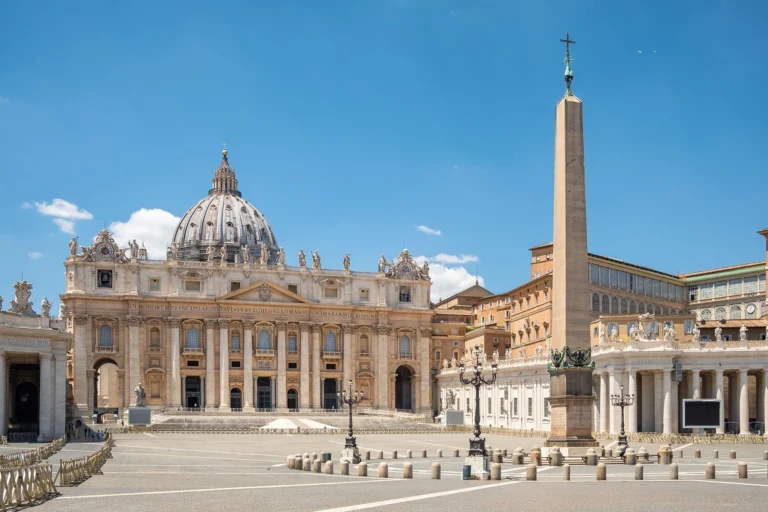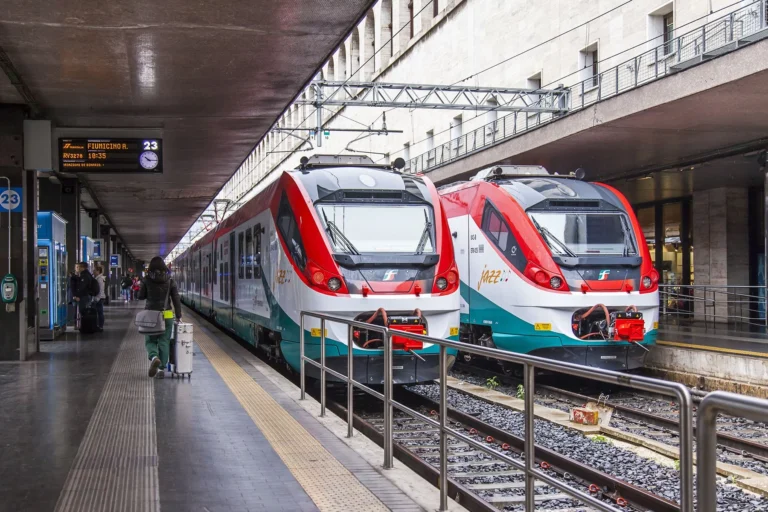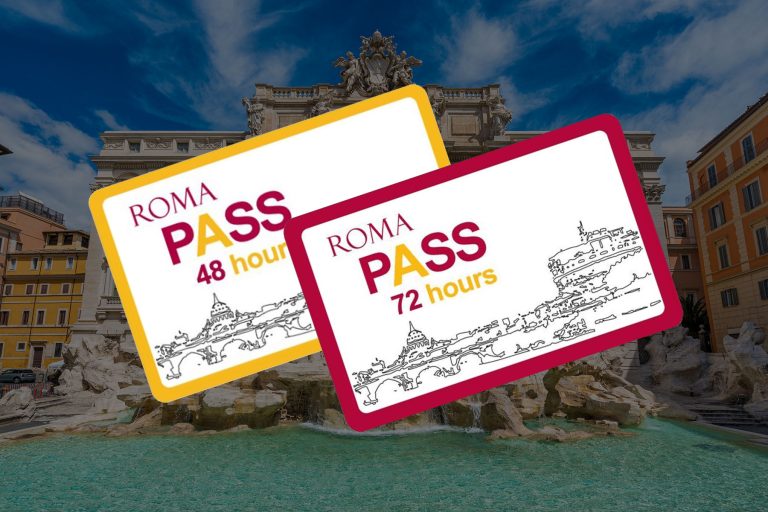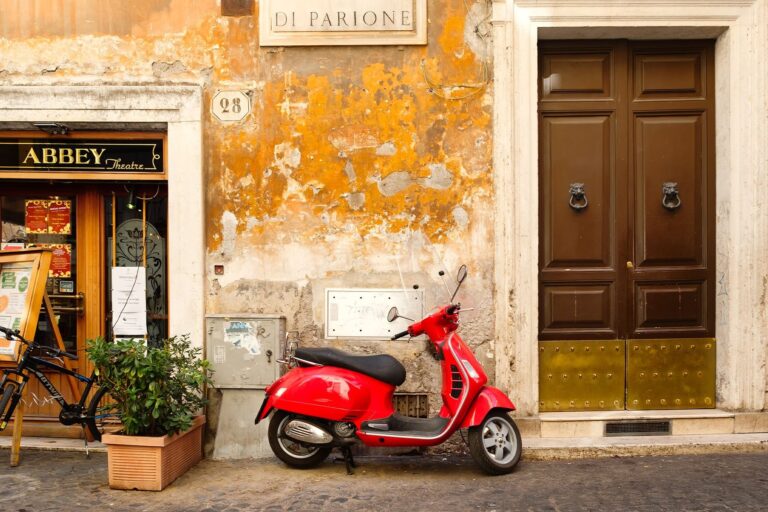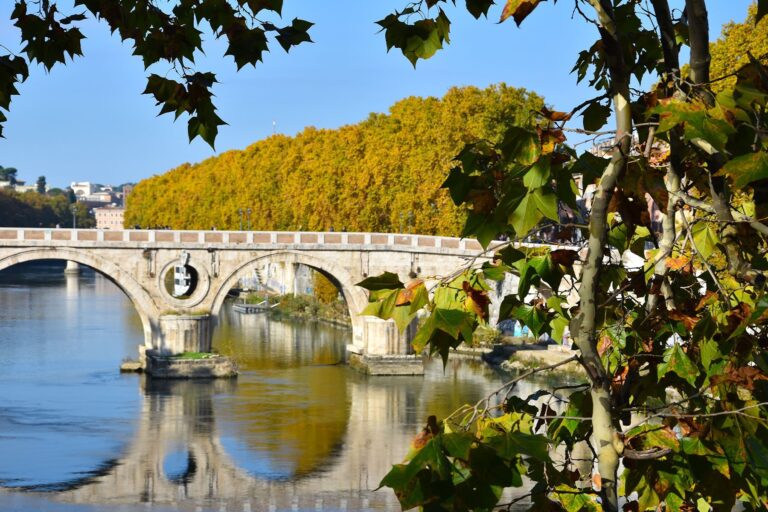The most famous part of Vatican City is undoubtedly St. Peter’s Square, which lies in front of St. Peter’s Basilica. The square became mainly known for the speeches from the Pope at the balcony of the basilica during Easter and Christmas celebrations.
St. Peter’s Square, known to Italians as Piazza San Pietro, essentially forms the centre of the Vatican City state and is one of the most impressive squares in the world. Many important landmarks of Vatican City border the square, including the impressive St. Peter’s Basilica, the Vatican Museums, and the papal palaces.
The square attracts millions of visitors annually, and especially on Sunday mornings, it gets very crowded when the Pope gives his weekly blessing. It is also always busy during the traditional Christmas and Easter speeches of the Pope. If the enormous square were filled with people, according to generous estimates, over 400,000 people could stand in the square. This number is often not reached as during the Pope’s speeches, part of the square is filled with plastic chairs.

History of Saint Peter’s Square (St. Peter’s Square)
The Piazza San Pietro was commissioned by Pope Alexander VII and designed by Gian Lorenzo Bernini, and it was constructed between 1656 and 1667. One of the main requirements for the square was that it should be designed to provide ample space for the many pilgrims who annually came to Rome to see the pope. Additionally, the façade of the enormous St. Peter’s Basilica had to be clearly visible from the square. The result is remarkable, and to this day, the square and the basilica are still renowned as architectural masterpieces.
The Via Della Conciliazione
If you walk from the Castel Sant’Angelo over the wide Via della Conciliazione street towards Vatican City, you will naturally arrive at the enormous St. Peter’s Square. The Via della Conciliazione is well-known as the access road to Vatican City. Often, this wide street is closed to traffic due to the safety of the many tourists in this area of Rome. Especially in the evening when the basilica and the square are fully illuminated, it is an impressive sight to walk from the Via della Conciliazione towards St. Peter’s Square.
The St. Peter’s Square during Christmas
Are you in Rome during the festive month of December? Then you’re in luck because during this period, just like the rest of Rome, St. Peter’s Square is extra adorned in the Christmas spirit. Around Christmas time, you can find a large Christmas tree on St. Peter’s Square and admire a grand nativity scene.
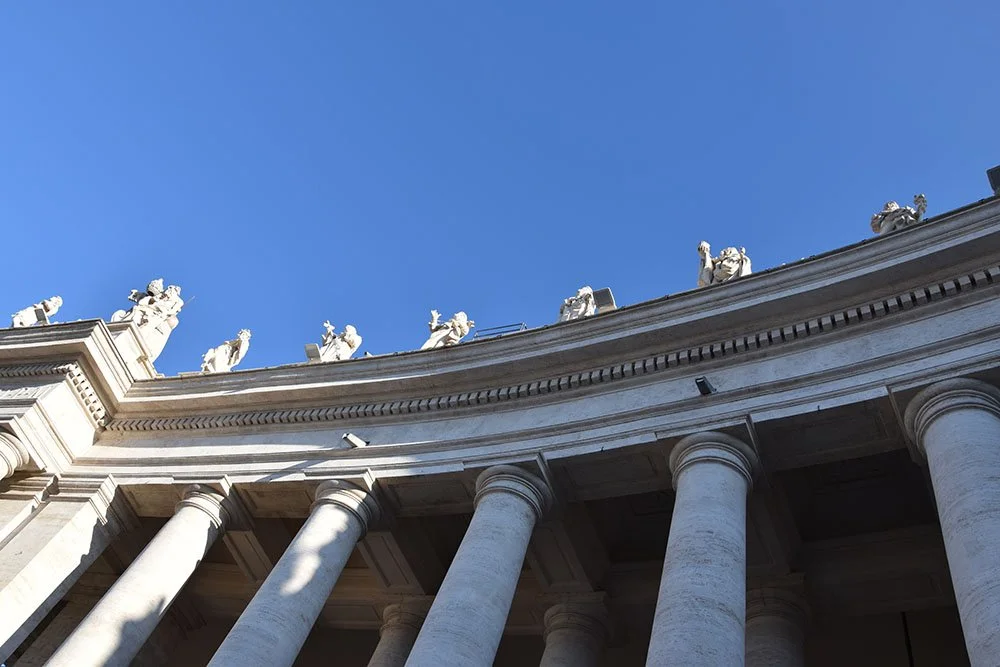
Colonnade in a row
The square, with its classical and Baroque elements, is 240 meters wide and 340 meters long. It is surrounded by a massive colonnade consisting of 284 Doric columns and 88 pillars, adorned with 140 statues of saints. This colonnade, also known as the colonnade, has each column measuring 1.5 meters thick.
The immense colonnade forms an ellipse with an inner diameter of approximately 198 meters, slightly widening towards the church. This design accentuates the impressiveness of the church. According to Bernini, the creator of the square, the two semiround colonnade galleries symbolize the maternal arms of God welcoming visitors to the square. When viewed from above, St. Peter’s Square resembles a keyhole, which is not entirely coincidental. Bernini intentionally designed the square so that the colonnade, shaped like an ellipse, along with the trapezium on the façade of the church, symbolizes the gateway to heaven.
Bernini incorporated several deliberate optical illusions into the square. Want to know what they are? Look for the two focal points of the obelisk, located between the obelisk and the fountains. In the centre of the colonnade, within a marble circle, you’ll find the words “centro del colonnato” . If you stand on this circle and then look at the row of columns closest to you, you’ll observe an optical trickery. From this vantage point, only one row of columns is visible instead of the four rows. From this point, all the columns of the colonnade appear to be aligned.

Vatican obelisk and Fountains on the Square
The central point of St. Peter’s Square is accentuated by the forty-meter-high Vatican obelisk. This Egyptian obelisk was erected in the square around 1586 by order of Pope Sixtus V and has a rich history.
On either side of the obelisk stand two seventeenth-century fountains. What is remarkable about these fountains is that they appear identical in appearance but were not designed and built simultaneously. The fountains spout water originating from Lake Bracciano. The water from the fountains can shoot up to 14 meters into the air.
The first fountain dates back to the year 1612 and was designed by the Swiss architect Carlo Maderno. This architect is responsible for multiple buildings in Rome, including the Palazzo Barberini, the Santa Susanna Church, and the Basilica di Santa Maria delle Vittoria. Because the construction of the fountain disrupted the symmetry of St. Peter’s Square, a second fountain was placed on the other side of the obelisk in 1675. This fountain, built by Bernini, is an exact replica of the first fountain.
Seeing the Pope at St. Peter’s Square
Do you want to catch a glimpse of Pope Francis during your stay in Rome? You can! When the Pope is in Vatican City, he holds a service in Rome every week. This service, also known as a blessing, is free for everyone to attend and takes place at St. Peter’s Square on Sunday mornings at 12:00 PM.
For more information on attending a service by Pope Francis, you can read on the page “Meet the Pope in Rome.”
